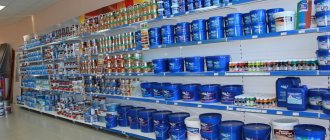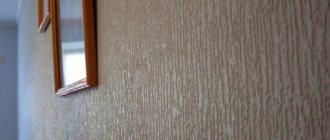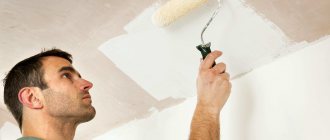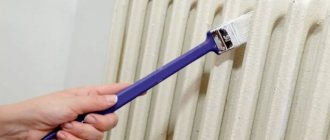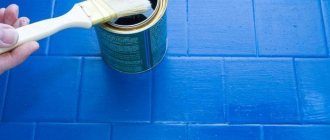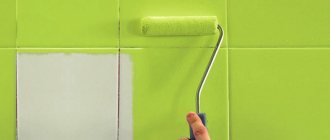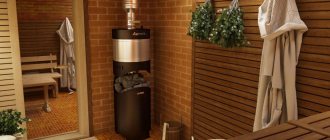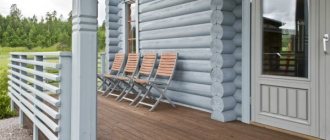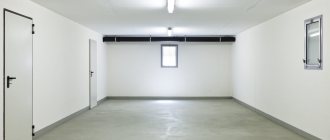Solvent - optional
Scotch tape (painting tape) – optional
1. The stove must be thoroughly cleaned: washed, dried and wiped with solvent.
2. In order not to splash the floor and walls, you need to cover them with newspapers, securing the newspapers with tape.
3. Apply spray paint in a thin layer over the entire surface.
4. After 1-2 minutes, apply the second layer. If necessary, apply additional thin layers of paint until you achieve the desired level of color saturation.
5. The heat-resistant coating will become as durable as possible after the oven warms up.
Features of slab coatings
First of all, you need to decide on the material with which the gas or electric stove is covered. Alloy steel is used as a structural material for the heating device. However, an additional layer is applied on top of the base, which performs both decorative and protective functions.
There are three coating options for slabs - enameled, stainless steel and ceramic.
Enameled coating
The enamel is highly resistant to high temperatures. Enameled coatings also protect the base from other adverse environmental influences, including humidity.
In the production of slabs, two types of enamels are used:
- For interior coatings. The main task of such enamels is to protect the base from high temperatures, mechanical damage and chemical reactions.
- For external coverings. The enamel must be resistant to mechanical stress and aggressive chemicals. The outer part of the slab must have aesthetic appeal.
The enamel contains the following components:
- quartz sand;
- soda;
- borax;
- feldspar.
As a result of mixing these components, a homogeneous transparent composition is obtained, to which a number of other materials are added:
- aluminum oxide;
- fluorides;
- lead;
- zinc;
- several types of alkalis;
- titanium.
To improve the adhesive properties of enamel, expensive components such as nickel and cobalt oxides are added to the composition.
Advantages of enamel coatings:
- resistance to high temperatures;
- possibility of obtaining a variety of colors;
- low cost of enamel;
- resistance to pollution.
- difficulties in removing carbon deposits from the coating;
- not the highest resistance to mechanical stress, possibility of chipping.
Stainless steel
Stainless steel is considered the best coating option for a stove. In the manufacture of hobs, two types of surfaces are used - matte or polished.
Advantages of stainless steel coatings:
- attractive appearance of the product;
- ease of cleaning from contaminants (and you can use almost any, even the most aggressive chemical).
- visibility of stains on the coating (even the most insignificant, for example, fingerprints);
- high cost of metal.
Ceramic coating
Ceramics are a combination of inorganic materials with the addition of mineral additives. Ceramic glass is used to cover cooking surfaces.
This material is characterized by a number of important qualities:
- high resistance to temperature influences;
- resistance to mechanical damage (at home we are talking primarily about accidental impacts that lead to chips);
- external attractiveness;
- hygiene;
- ease of maintenance of the coating.
Note! When choosing a hob, it is recommended to take a closer look at the integrity of the coating. If there are already chips on it, most likely, we are talking about low-quality materials. The problem will only get worse in the future.
Painting works
You can paint the stove yourself.
To do this you will need the following set of materials:
- surface degreaser (acetone or other solvent),
- masking tape,
- heat-resistant paint.
Instructions for performing the work:
- Inspect the surface for defects. If there are chips, remove the entire layer of old paint. This is necessary so that there is no relief on the coating. If the surface is smooth, it is recommended to leave the old paint layer.
- Degrease the surface.
- Remove oil or grease stains, traces of rust, and any other contaminants. Without this, you cannot begin to restore the enamel, since it will not be possible to achieve good adhesion.
- To avoid staining foreign surfaces, it is recommended to cover them with paper or plastic wrap.
- If you are going to apply paints of several colors, it is advisable to use adhesive tape, which will allow you to separate the surface areas. To ensure the most accurate application of paint, the spray can in border areas should be kept at approximately a 10-centimeter distance from the coating being applied. When applying paint to other areas, the distance between the can and the surface should be 20 - 25 centimeters.
- It is recommended to shake the can before applying paint. As a result of shaking, a uniform distribution of the composition throughout the container and uniformity of its consistency are achieved.
- Painting work may only be carried out in a well-ventilated area. The optimal air temperature is 18 – 25 degrees Celsius.
- Approximately 3 - 5 minutes after applying the primary coat of paint, a second coat of paint should be applied. An additional layer will increase the depth of color and disguise old stains. In addition, a second coat of paint will enhance the protective properties of the coating.
Advice! Paint should be removed outdoors, as particles tend to fly away and settle on furniture and other interior items.
To paint an electric stove, you need to follow the same algorithm as in the case of gas stoves. The only difference is that you need to act more delicately, since the cooking surface of electrical appliances is less resistant to external influences.
Step by Step Actions
What colors are suitable?
Heat-resistant paint for gas ovens HI-TEMP
- To paint gas stoves and stoves, you can use various heat-resistant compounds, for example, fire-retardant paints for metal Polistil, but here the question arises about their application to the surface . As you understand, the most even layer remains in cases where painting work is carried out by spraying, which means that in this case there are two options - either use a spray bottle or buy aerosol cans.
- Considering the fact that the area of the gas stove is small, there is no point in charging the sprayer - more material will remain on the unit itself, therefore, it is much more advisable to use cans.
Black heat resistant CAR paint
- When choosing aerosols, one should not forget that what can be used to paint a gas stove does not necessarily have to withstand extreme temperatures of more than 500⁰ C. After all, apart from the grate, which you are unlikely to paint - there is no point, then the pan is mainly heated, and more specifically , places around the burners, but there the temperature rises to a maximum of 70⁰ C. Most people can handle metal heated to this degree with their bare hands, therefore heat-resistant paint, especially if it must withstand 500⁰ C-600⁰ C, will be an excellent coating.
Conclusions and useful video on the topic
Next, watch a video about the properties of heat-resistant paint in cans:
The process of surface restoration is not a difficult task, but it still requires some effort and expense. If you do everything according to technology, you can achieve good results. This will improve the performance properties of the working surface of the gas stove. And also give it a beautiful appearance, thereby saving money on the purchase of new equipment.
But independent restoration may not always bring the expected result. Therefore, if you are not sure that you can cope with such a task, then it’s time to turn to professionals who know their business and can get the job done quickly and efficiently .
Have you recently painted an old stove yourself? Share a photo of the finished work in the comments section, tell us what paint you purchased for these purposes. Write your recommendations, participate in discussions on the feasibility of painting a surface, answer questions from other users if you have already encountered a similar question.
What kind of paint can be used for the stove?
The kitchen stove is exposed to high temperatures every day, hot drops from various products fall on it, and after cooking, the stove must be thoroughly washed with various chemical and abrasive detergents. At the same time, the enamel covering the kitchen stove often deteriorates, chips and cracks appear on it. The equipment takes on an ugly appearance, as in the photo, but it’s a shame to throw it away; the stove works well. The only way out is to restore the enamel of the slab.
But how to paint a gas stove at home?
The paint for a gas stove must be heat-resistant (see Heat-resistant paint and its features), for example, such as fire-retardant paints Polistil, used for application to metal.
Tip: The most even coating layer is obtained when painting by spraying. In this case, you should use a spray bottle, or purchase aerosol cans.
Due to the small area of the gas stove, it is not necessary to charge the sprayer. In this case, more material will remain on the unit itself; preference should be given to cans. To paint a gas stove, you do not need to purchase compounds that can withstand extreme temperatures above 500⁰ C.
This is due to the fact that:
- The grate heats up the most, but it is usually not painted.
- When heating the pan - the areas around the burners, the temperature rises to a maximum of 70⁰ C.
The question of restoration
Decorating and restoring an old gas stove is a task that requires certain skills and the use of special tools. This operation is otherwise called decoupage of a gas stove.
Most often, more defects form on the slab cover, especially traces of corrosion. Therefore, in this process it is still decided how to paint the lid of the gas stove?
Required tools and avant-garde materials:
- Sandpaper. Format - zero.
- Acrylic: primer, white and blue paints, as well as varnish.
- Napkins.
- Brushes: for glue and paint.
- The glue itself is a type of PVA.
All work can be done in the kitchen. The workflow is like this:
The lid is removed from its hinges. He washes himself. Drying. All defective areas are cleaned with sandpaper. The lid is then washed again and thoroughly dried.
Very often, only the inside of the lid is damaged. Usually these are the consequences of frequent use of abrasives. Because of them, the enamel weakened, cracks and traces of rust appeared.
In this case, how to restore the gas stove, and in particular its lid? Damaged areas should be generously coated with primer. A minimum of 2-3 layers is required. This is a measure against the appearance of rust on the finished surface. The number of layers can reach 5, 6, or more. But most often there are 2-3 layers of them. The level of damage also matters here.
After which these areas are covered with two layers of acrylic paint. A large construction brush is used for application. The third layer is also applied. Only a sponge made from a washcloth is already used. Drying time for each layer is at least 12 hours.
During this period, you can create decoupage images if you have the desire and skill. Example
Next, the napkin used is exfoliated. You can use nail scissors for cutting. The napkin is glued. After this, the trace of the napkin is not noticeable at all. An example of what happens:
However, even before gluing such motifs, you need to apply a layer of working varnish (acrylic). The napkin sticks perfectly.
PVA glue is used. It is diluted with water in proportions 1:1. The motifs are glued to the cover being processed with a thin brush.
These were the main stages. After which the varnish is applied. If you need a coating with a color characteristic that resembles baked milk and has a bluish tint, you need to add some chemicals. A little blue is added to the white paint.
The final layers (4 and 5) are applied with a sponge. White and blue paint is used. The distance for capturing the edges of napkin images is 5 mm.
After this, the lid dries well. Varnish is applied. For an effective and reliable result, at least 5-6 layers are needed. Since this object (lid) is subject to frequent loads and contamination, and cleaning.
The lid is then dried again and replaced in its position.
Example:
Painting instructions.
The kitchen stove is exposed to high temperatures every day, hot drops from various products fall on it, and after cooking, the stove must be thoroughly washed with various chemical and abrasive detergents. At the same time, the enamel covering the kitchen stove often deteriorates, chips and cracks appear on it.
The equipment takes on an ugly appearance, as in the photo, but it’s a shame to throw it away; the stove works well. The only way out is to restore the enamel of the slab.
Enamel defects on a gas stove
The paint for a gas stove must be heat-resistant (see Heat-resistant paint and its features), for example, such as fire-retardant paints Polistil, used for application to metal.
Tip: The most even coating layer is obtained when painting by spraying. In this case, you should use a spray bottle, or purchase aerosol cans.
Due to the small area of the gas stove, it is not necessary to charge the sprayer. In this case, more material will remain on the unit itself; preference should be given to cans. To paint a gas stove, you do not need to purchase compounds that can withstand extreme temperatures above 500? C.
Elcon enamel
The products of a well-established domestic manufacturer are characterized by guaranteed preservation of heat-resistant properties within 1000°C, and also have a matte or semi-gloss type of gloss. Heat-resistant enamel is sold by retail outlets packaged in cans (520 ml), jars (800 ml) and buckets (25 l).
In addition to various metal surfaces, modern paint and varnish composition allows you to work with brick ovens, as well as heated concrete and asbestos products.
How to properly dye at home
It is recommended to use aerosol formulations for painting slabs. Such materials are easy to use and speed up work. The algorithm for painting the slabs is as follows:
- In the room where painting is done, through ventilation is created. This is necessary because the materials used include components harmful to the body.
- The first coat of paint is applied. The spray can must be kept at a distance of 20 centimeters from the surface to be treated. If several colors are applied, then the distance near the border should be reduced by 10 centimeters. This allows you to achieve the most even transition between shades.
- After five minutes, a second layer is applied.
When painting slabs, you cannot apply less than two layers. Otherwise, the material will not gain sufficient strength, as a result of which the procedure will have to be repeated. If necessary, you can apply three layers to deepen the color.
The slabs can also be painted using brushes. However, in this case it is more difficult to obtain an even and uniform layer. Therefore, brushes are usually used to decorate the device and apply complex designs.
You can connect the stove to the gas line and turn on the fire only after the applied composition has completely dried. How long this process takes is indicated on the jar with the coloring composition.
How to paint the outside of a refrigerator: choosing paint composition and tools
The first thing that needs to be decided is how the coloring composition will be applied to the surface. There are two options here - brush and roller or spray. Both have their positive and negative sides. We will dwell on this issue in more detail.
Once the choice of application method has been made, you can proceed to the choice of paint. There can be three options here - enamel, epoxy or acrylic paint. It is on this issue that we will now dwell in more detail.
Refrigerator exterior paints applied by brush and roller
All three types of paints used can be applied with a brush and roller, but there is a certain difference between them:
- enamel paint. It is with these compositions that the surface is painted in production, which means this will be the best option. The enamel has good adhesion, and the surface after painting acquires an even gloss that is pleasing to the eye. The only drawback is the presence of highly toxic solvents in the composition. Therefore, it is worth taking care of good ventilation or (if possible) performing work in an open space;
- epoxy composition. After application it looks identical to enamel. It has the same characteristics, however, it is significantly inferior to the previous version both in price (such pigments are much more expensive) and in ease of application (epoxy compounds are very difficult to work with);
- acrylic. Despite the fact that this composition is inferior in characteristics to enamel, it is quite suitable for surfaces used indoors. In addition, the cost of painting will be significantly lower.
How can you paint a refrigerator without using a brush?
Today on store shelves you can find many aerosol paints that do not require the use of a roller or brush. Automotive pigments in cans are perfect for painting a refrigerator; their characteristics are not inferior to conventional enamels. Their use will significantly speed up and facilitate the process. However, the cost of such compositions is slightly higher.
HELPFUL INFORMATION!
Painting surfaces with a brush or roller is more difficult, but the work can be done more accurately without staining the floors or walls. It is better to use aerosol paints if you can take the refrigerator out into the open. The advantage of aerosol formulations is that the coating is thin and even.
